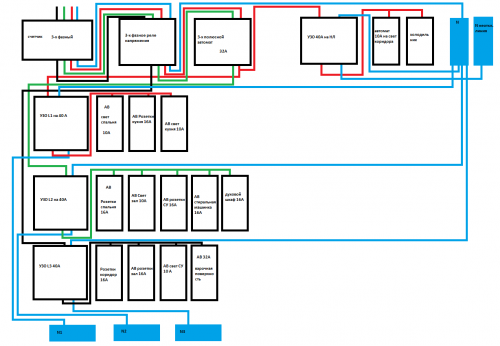Assembly diagram of a three-phase electrical panel for a two-room apartment
The apartment wiring has already begun to be done, but it was customary to install an electrical panel now along with the lead-in wire. Then, upon installation, new wires will be connected to pre-prepared machines. We have a small apartment of 42 squares with 2 rooms, in which we live and simultaneously make repairs.
Three-phase wiring without grounding. At the entrance there is a common electrical panel where there is an introductory 3-pole circuit breaker of IEK 32A. I plan to collect everything at Hager. But I can not decide on the plan of the electrical panel and I doubt that I designed it correctly.
Briefly about the shield itself, an entrance automatic 32A is installed in the entrance from which the wires to the apartment go to the counter. From it goes wiring to a three-phase voltage relay, and from it to a three-pole circuit breaker. From it, from one phase there is a branch to an unconnected line, where through an ouzo there is an automatic machine for light in the corridor and a refrigerator. There is an idea to power the UZO NL from the voltage relay by protecting it with a 32A single-pole circuit breaker. The general line after the 3-pole circuit breaker goes further - each phase has its own ouzo.



